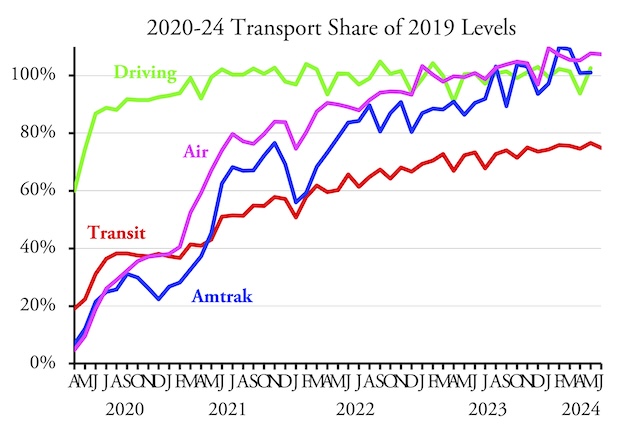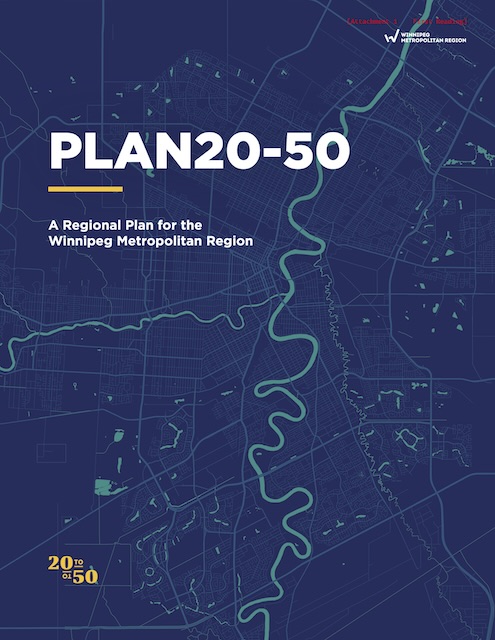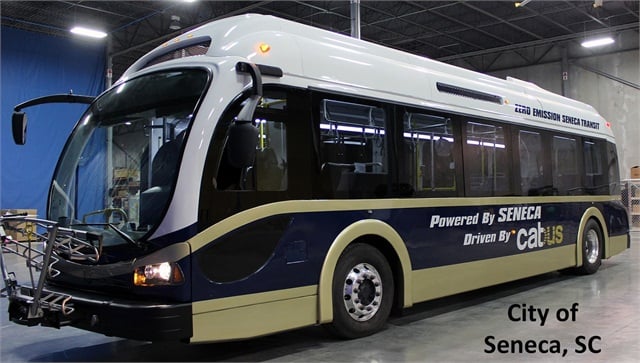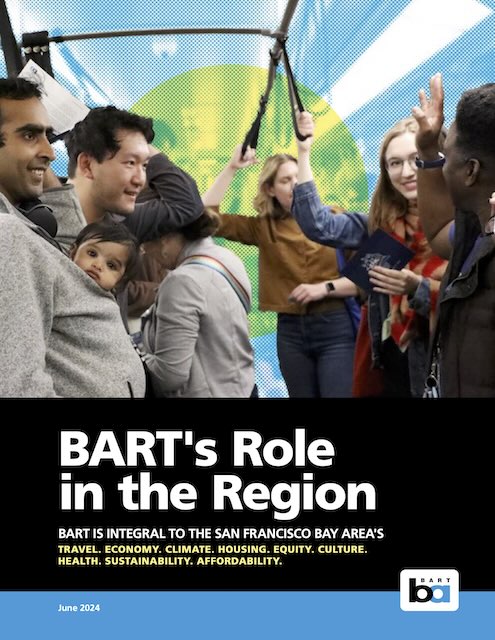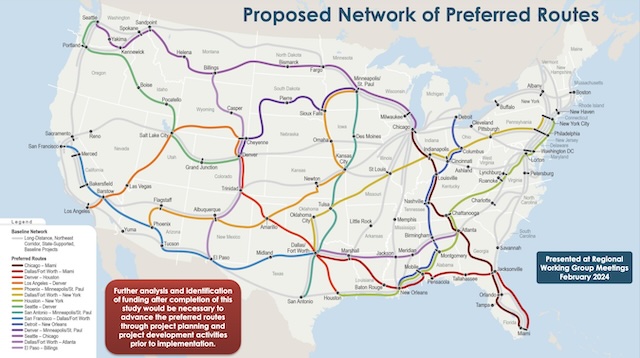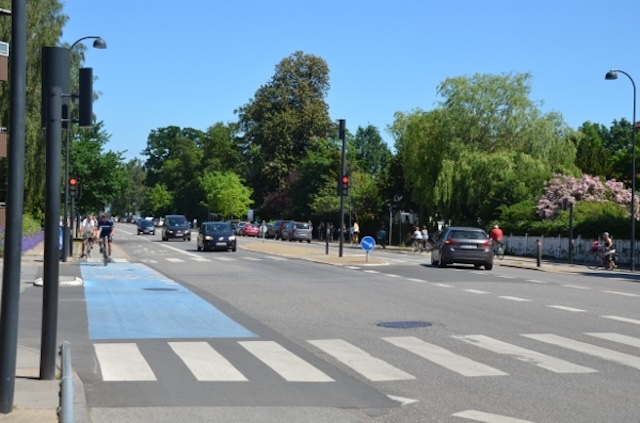After creeping up above 75 percent of pre-pandemic ridership for the first time in May, transit ridership fell back down to 74.9 percent in June, according to data released by the Federal Transit Administration on Tuesday. Meanwhile, air travel continued soaring at 7.4 percent above pre-pandemic numbers, according to TSA counts.
Data are not yet available for Amtrak and driving but will be posted here as soon as they are.
Transit’s failure to recover from the pandemic is due largely to its downtown-centric orientation in most urban areas. Before the pandemic, almost half of all transit commuters in the nation’s 50 largest urban areas worked downtown, and almost half of downtown workers commuted by transit whereas less than 6 percent of non-downtown workers used transit to get to work. Although less than 10 percent of urban employees worked downtown, transit didn’t work for most of the other 90 percent. Continue reading

